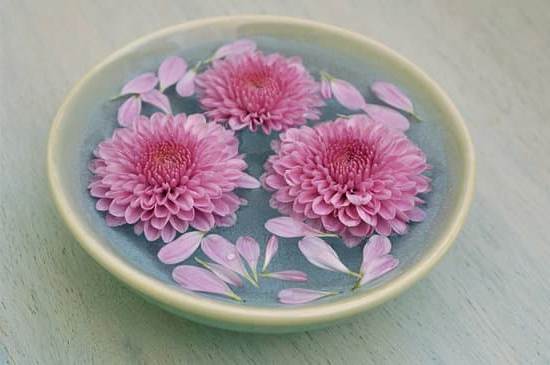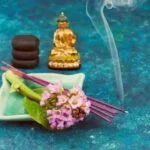Aromatherapy is a holistic healing treatment that uses natural plant extracts, known as essential oils, to promote physical and emotional well-being. In this article, we will explore the basics of aromatherapy and how essential oils are used in this practice. From understanding the benefits of aromatherapy to learning the safe usage of essential oils, we will cover everything you need to know about incorporating these therapeutic oils into your daily routine.
Essential oils are highly concentrated liquids that are extracted from various parts of plants such as flowers, leaves, bark, and roots. These potent oils have been used for centuries in traditional medicine practices for their healing properties. Today, they are widely used in aromatherapy to alleviate stress, improve sleep quality, reduce inflammation, and enhance mental clarity. Understanding how essential oils work and the best ways to use them is crucial for effectively harnessing their benefits.
In the following sections, we will delve into the benefits of aromatherapy and explore the healing properties of different essential oils. We will also provide important guidelines for the safe usage of essential oils in aromatherapy practices. Whether you are new to aromatherapy or looking to expand your knowledge, this comprehensive guide will help you navigate the world of essential oils and their role in promoting overall wellness.
Benefits of Aromatherapy
Aromatherapy has gained popularity in recent years as people seek holistic and natural methods of healing. Essential oils are at the heart of aromatherapy, and their healing properties have been utilized for centuries. These oils, extracted from plants, flowers, and herbs, contain powerful compounds that can benefit both physical and mental health.
Healing Properties of Essential Oils
Essential oils possess a wide range of healing properties that make them valuable in aromatherapy. Some oils have anti-inflammatory effects, which makes them helpful for reducing pain and swelling. Others have antimicrobial properties, making them useful for fighting off infections and boosting the immune system. Certain essential oils also have calming or uplifting effects on the mind, making them beneficial for managing stress, anxiety, or depression.
Benefits of Aromatherapy
Aromatherapy offers a variety of benefits due to the healing properties of essential oils. When used in aromatherapy practices, essential oils can promote relaxation and improve sleep quality. They can also help alleviate symptoms of conditions such as headaches, migraines, and respiratory issues. Other benefits include improving focus and concentration, relieving muscle tension, and enhancing overall well-being.
Research on Aromatherapy’s Healing Effects
Numerous studies have demonstrated the effectiveness of aromatherapy in harnessing the healing properties of essential oils. Research has shown that certain essential oils can have analgesic effects when used topically or through inhalation. Other studies have indicated that specific aromas can positively impact mood and emotional well-being. As more research is conducted, the potential benefits of using essential oils in aromatherapy continue to be validated by scientific evidence.
By exploring the healing properties of essential oils through aromatherapy practices, individuals can experience natural relief for various physical and emotional ailments while embracing a holistic approach to health and wellness.
Safe Usage of Essential Oils
When using essential oils for aromatherapy, it is crucial to follow important guidelines to ensure safe and effective usage. Here are some key principles to keep in mind when incorporating essential oils into your aromatherapy practices:
- Dilution: Essential oils are highly concentrated and should be diluted before applying them to the skin. A common dilution ratio is 2-3 drops of essential oil per teaspoon of carrier oil.
- Patch Test: Before using any new essential oil, it is important to conduct a patch test to check for any allergic reactions or sensitivities. Apply a small amount of diluted oil to the inner forearm and observe for any adverse effects over 24 hours.
- Storage: Essential oils should be stored in dark glass bottles away from heat and sunlight to preserve their potency. Keep them out of reach of children and pets.
In addition, it is important to be mindful of the potential risks associated with certain essential oils. Some oils can cause skin irritation or sun sensitivity, while others may not be suitable for individuals with certain medical conditions or during pregnancy.
Understanding these guidelines will help ensure that you are using essential oils safely and responsibly in your aromatherapy practices.
When using essential oils in aromatherapy, it is also essential to consider proper ventilation, especially when diffusing oils in enclosed spaces. This helps prevent overexposure and ensures that the aroma is distributed evenly throughout the room. Ultimately, following these guidelines will allow you to enjoy the benefits of aromatherapy while minimizing any potential risks associated with essential oil usage.
Top Essential Oils for Aromatherapy
Aromatherapy is the use of essential oils to promote a sense of well-being and to address various health concerns. Essential oils are highly concentrated plant extracts that can be used in different ways in aromatherapy. Some of the most popular options for essential oils in aromatherapy include lavender, peppermint, eucalyptus, tea tree, and lemon.
Lavender essential oil is known for its calming and relaxing properties. It is often used to promote better sleep, reduce anxiety, and alleviate stress. Peppermint essential oil has invigorating and energizing effects, making it useful for boosting mental clarity and easing headaches.
Eucalyptus essential oil is commonly used for respiratory issues such as congestion and sinusitis due to its decongestant properties. Tea tree essential oil has antimicrobial properties and is often used to treat skin issues such as acne and fungal infections. Finally, lemon essential oil is refreshing and uplifting, making it suitable for improving mood and reducing fatigue.
These essential oils can be used in aromatherapy through various methods such as inhalation, topical application, and diffusion. Inhalation involves breathing in the aroma of the essential oil using a diffuser or by adding a few drops to a bowl of hot water. Topical application involves diluting the essential oil with a carrier oil before applying it to the skin through massage or compresses.
It’s important to note that when using essential oils for aromatherapy, they should be properly diluted and used according to recommended guidelines to ensure safety and effectiveness. Additionally, certain essential oils may not be suitable for everyone, especially pregnant women, children, or individuals with certain medical conditions. Knowing how are essential oils used in aromatherapy can help individuals make informed choices about which oils to use and how best to utilize them for their specific needs.
Different Methods of Applying Essential Oils in Aromatherapy
Aromatherapy is a practice that involves using essential oils to promote physical and psychological well-being. Essential oils are commonly used in aromatherapy for various purposes such as stress relief, relaxation, and pain management. But how are essential oils used in aromatherapy? There are several different methods of applying essential oils, including inhalation, topical application, and more.
Inhalation is one of the most common methods of using essential oils in aromatherapy. This can be done by adding a few drops of essential oil to a bowl of hot water and inhaling the steam, using a diffuser to disperse the aroma throughout the room, or simply inhaling the scent directly from the bottle.
Inhaling essential oils can have a direct impact on our limbic system which controls our emotions and memories, making it an effective method for promoting relaxation and reducing stress.
Topical application is another popular way of using essential oils in aromatherapy. When applied topically, essential oils can be absorbed through the skin and enter the bloodstream, providing various therapeutic benefits.
Some common ways to apply essential oils topically include adding them to carrier oils for massage, creating lotions or balms, or adding them to bathwater. It’s important to note that some essential oils may need to be diluted with a carrier oil before applying them to the skin to avoid irritation.
Other methods of using essential oils in aromatherapy include ingestion (although this should only be done under the guidance of a qualified healthcare practitioner) and incorporating them into household cleaning products or personal care items. Understanding these different methods of applying essential oils is crucial for using them safely and effectively in aromatherapy practices.
| Different Methods | Benefits |
|---|---|
| Inhalation | Direct impact on limbic system for emotional well-being |
| Topical Application | Absorption through skin for therapeutic benefits |
| Ingestion/Cleaning Products | Under healthcare guidance/Household use |
Blending Essential Oils for Aromatherapy
Aromatherapy involves the use of essential oils to promote physical and psychological well-being. One of the key aspects of aromatherapy is the blending of essential oils to create customized blends that target specific needs or desired effects. Here are some important tips on blending essential oils for aromatherapy:
- Understanding the Properties of Essential Oils: Before blending essential oils, it is crucial to have a good understanding of the properties of each oil. Some essential oils have energizing effects, while others are known for their calming or soothing properties. By knowing the individual properties of each oil, you can better tailor your blends to achieve the desired outcome.
- Creating Balance in Your Blends: When blending different essential oils, it is important to create a balanced blend that harmonizes all the components. This may involve combining oils with different intensity levels, ensuring that no single oil overpowers the entire blend. By achieving balance in your blends, you can create a synergistic effect that enhances the overall therapeutic benefits.
- Experimenting and Keeping Records: Blending essential oils for aromatherapy is also a process of experimentation. It’s important to keep track of your blends and their effects by maintaining detailed records. Noting down the recipes and outcomes will help you refine your skills as an aromatherapist and improve your ability to create effective blends.
Creating customized aromatherapy blends offers a personalized approach to addressing various health and wellness concerns using natural remedies. Blending essential oils allows individuals to tailor their aromatherapy experience based on their unique preferences and needs, making it a versatile and effective practice in holistic health care.
Aromatherapy for Different Purposes
Aromatherapy has been used for centuries to promote relaxation, reduce stress, and manage pain. Essential oils play a key role in this practice, as they are known for their therapeutic properties that can help address various physical and emotional issues. So, how are essential oils used in aromatherapy to achieve these purposes?
When it comes to stress relief, essential oils like lavender, chamomile, and bergamot are often used in aromatherapy. These oils have calming and soothing properties that can help reduce feelings of anxiety and promote a sense of relaxation. They can be diffused in the air using a diffuser or added to a warm bath for a truly relaxing experience.
For relaxation purposes, essential oils such as ylang-ylang, geranium, and sandalwood are commonly used in aromatherapy practices. These oils are known for their ability to promote feelings of serenity and tranquility. A few drops of these oils can be added to a carrier oil and used for a soothing massage or added to a room spray for an overall calming effect.
When it comes to pain management, essential oils such as peppermint, eucalyptus, and rosemary are often utilized in aromatherapy treatments. These oils have analgesic and anti-inflammatory properties that can help alleviate muscle soreness and discomfort.
They can be diluted with a carrier oil and applied topically to the affected area or used in a compress for targeted relief. Overall, the versatility of essential oils in aromatherapy makes them valuable tools for addressing different needs related to stress relief, relaxation, pain management, and more.
DIY Aromatherapy Recipes
Aromatherapy is a practice that involves using natural plant extracts, known as essential oils, to promote physical and psychological well-being. One of the most appealing aspects of aromatherapy is the ability to create your own aromatherapy products using essential oils. Whether you are looking to relieve stress, improve focus, or simply create a relaxing atmosphere in your home, making your own aromatherapy products can be both cost-effective and rewarding.
Choosing Essential Oils for Your DIY Aromatherapy Recipes
When creating your own aromatherapy products, it is important to start by selecting the right essential oils for your desired outcome. For relaxation and stress relief, consider using lavender, chamomile, or frankincense essential oils. If you are looking to boost energy and improve mental clarity, citrus oils such as lemon, orange, or grapefruit may be more suitable. It is important to research the properties of each essential oil before incorporating them into your DIY recipes.
Simple DIY Aromatherapy Recipes
There are countless ways to use essential oils in DIY aromatherapy products. One popular method is creating homemade room sprays by mixing water with a few drops of your chosen essential oil in a spray bottle. Additionally, you can make your own soothing bath salts by combining Epsom salt with lavender and eucalyptus essential oils. Another easy DIY recipe involves blending coconut oil with peppermint and rosemary essential oils to create a refreshing massage oil for relaxation.
Safety Considerations When Creating Aromatherapy Products
It is crucial to remember that essential oils are highly concentrated substances and should be handled with care when creating aromatherapy products at home. Always dilute essential oils properly and perform patch tests before using any new blend on your skin. Keep in mind that certain essential oils may cause irritation or allergic reactions in some individuals. Following safety guidelines ensures that you can enjoy the benefits of aromatherapy without any adverse effects.
By utilizing these simple tips and recipes for creating your own aromatherapy products using essential oils, you can experience the therapeutic benefits of aromatherapy in a personalized and enjoyable way.
Conclusion
In conclusion, the use of essential oils in aromatherapy is a time-tested practice that offers a wide range of benefits for both physical and mental well-being. From stress relief to pain management, and from relaxation to enhancing mood, essential oils have been utilized for centuries to promote overall health and wellness.
As we have explored in this article, understanding the basics of aromatherapy and essential oils is crucial in order to experience the full potential of these natural remedies.
One of the key takeaways from our exploration is the importance of safe usage when it comes to essential oils in aromatherapy. Following important guidelines for dilution, application methods, and potential contraindications is imperative for practicing aromatherapy effectively and safely. Additionally, knowing how to blend essential oils for customized aromatherapy blends can provide a personalized approach to addressing individual needs and preferences.
Furthermore, by learning about different methods of applying essential oils in aromatherapy such as inhalation or topical application, individuals can discover which method works best for them. This knowledge empowers individuals to harness the healing properties of essential oils in a way that aligns with their lifestyle and comfort level.
Overall, embracing the benefits of essential oils in aromatherapy practices involves understanding their properties, adhering to safe usage guidelines, exploring various application methods, and incorporating them into everyday routines to promote overall wellness.
Frequently Asked Questions
What Are the 3 Ways Essential Oils Can Be Used?
Essential oils can be used through inhalation, topical application, or ingestion. Inhalation involves diffusing the oil in the air or inhaling it directly. Topical application involves applying the oil to the skin, while ingestion refers to consuming the oil orally.
Do Essential Oils Work for Aromatherapy?
Essential oils are commonly used in aromatherapy and have been found to be effective for some people in promoting relaxation, reducing stress, improving sleep quality, and easing symptoms of certain conditions like headaches and nausea. However, individual responses to essential oils can vary.
What Are the Examples of Essential Oils and Their Uses in Aromatherapy?
Examples of essential oils used in aromatherapy include lavender, which is known for its calming and soothing properties; peppermint, which is often used for its uplifting and energizing effects; and tea tree oil, which is valued for its antibacterial and antifungal properties. Other examples include lemon for its uplifting scent and eucalyptus for its respiratory benefits when inhaled.
Each essential oil has specific uses within aromatherapy practices.

Are you looking for a natural way to improve your health and wellbeing?
If so, aromatherapy may be the answer for you.





